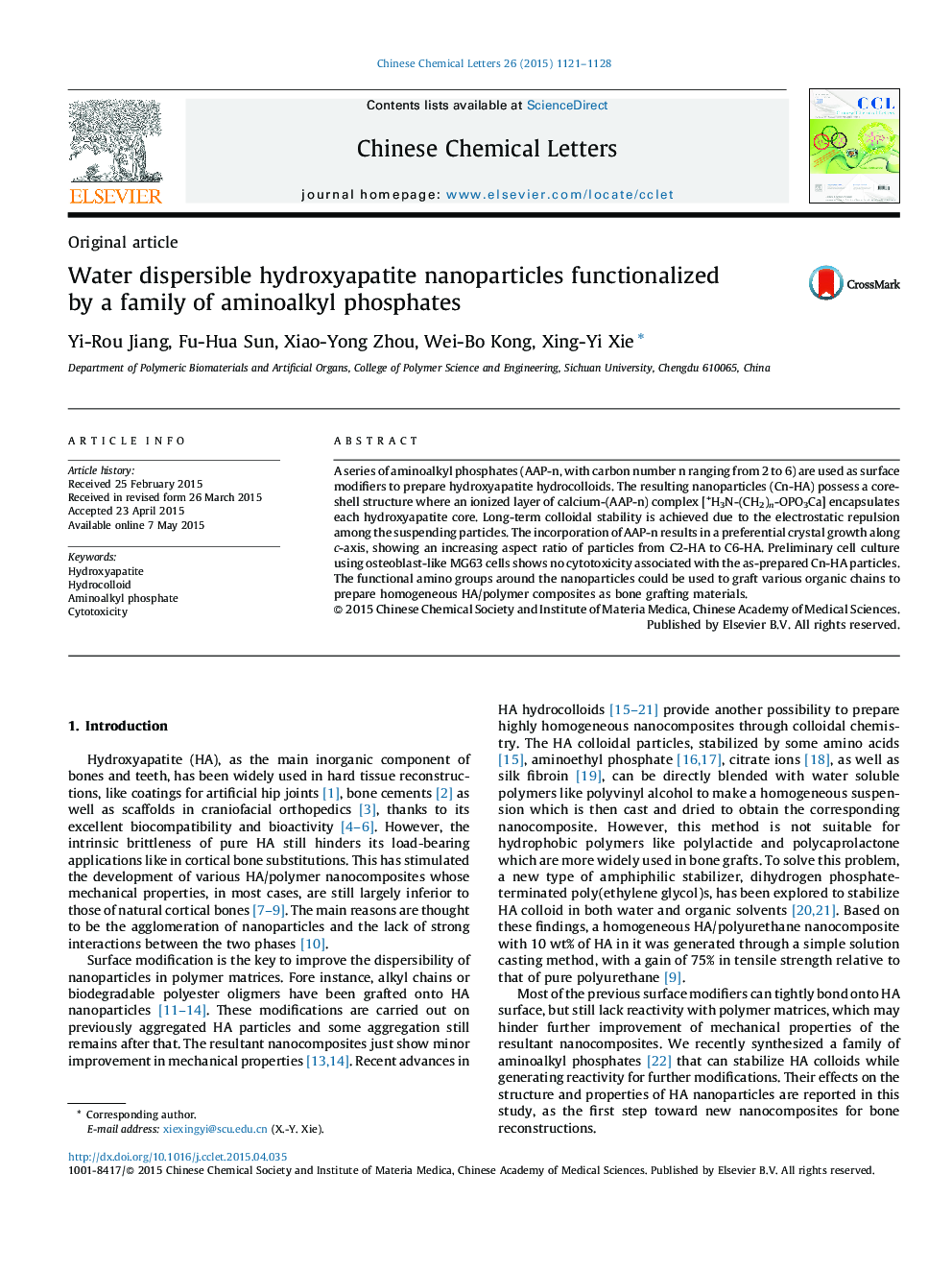| Article ID | Journal | Published Year | Pages | File Type |
|---|---|---|---|---|
| 1254679 | Chinese Chemical Letters | 2015 | 8 Pages |
A series of aminoalkyl phosphates (AAP-n, with carbon number n ranging from 2 to 6) are used as surface modifiers to prepare hydroxyapatite hydrocolloids. The resulting nanoparticles (Cn-HA) possess a core-shell structure where an ionized layer of calcium-(AAP-n) complex [+H3N-(CH2)n-OPO3Ca] encapsulates each hydroxyapatite core. Long-term colloidal stability is achieved due to the electrostatic repulsion among the suspending particles. The incorporation of AAP-n results in a preferential crystal growth along c-axis, showing an increasing aspect ratio of particles from C2-HA to C6-HA. Preliminary cell culture using osteoblast-like MG63 cells shows no cytotoxicity associated with the as-prepared Cn-HA particles. The functional amino groups around the nanoparticles could be used to graft various organic chains to prepare homogeneous HA/polymer composites as bone grafting materials.
Graphical abstractAminoalkyl phosphates (AAP-n) functionalized hydroxyapatite nanoparticles are synthesized, with different morphology controlled by the carbon number in the surface modifier used.Figure optionsDownload full-size imageDownload as PowerPoint slide
